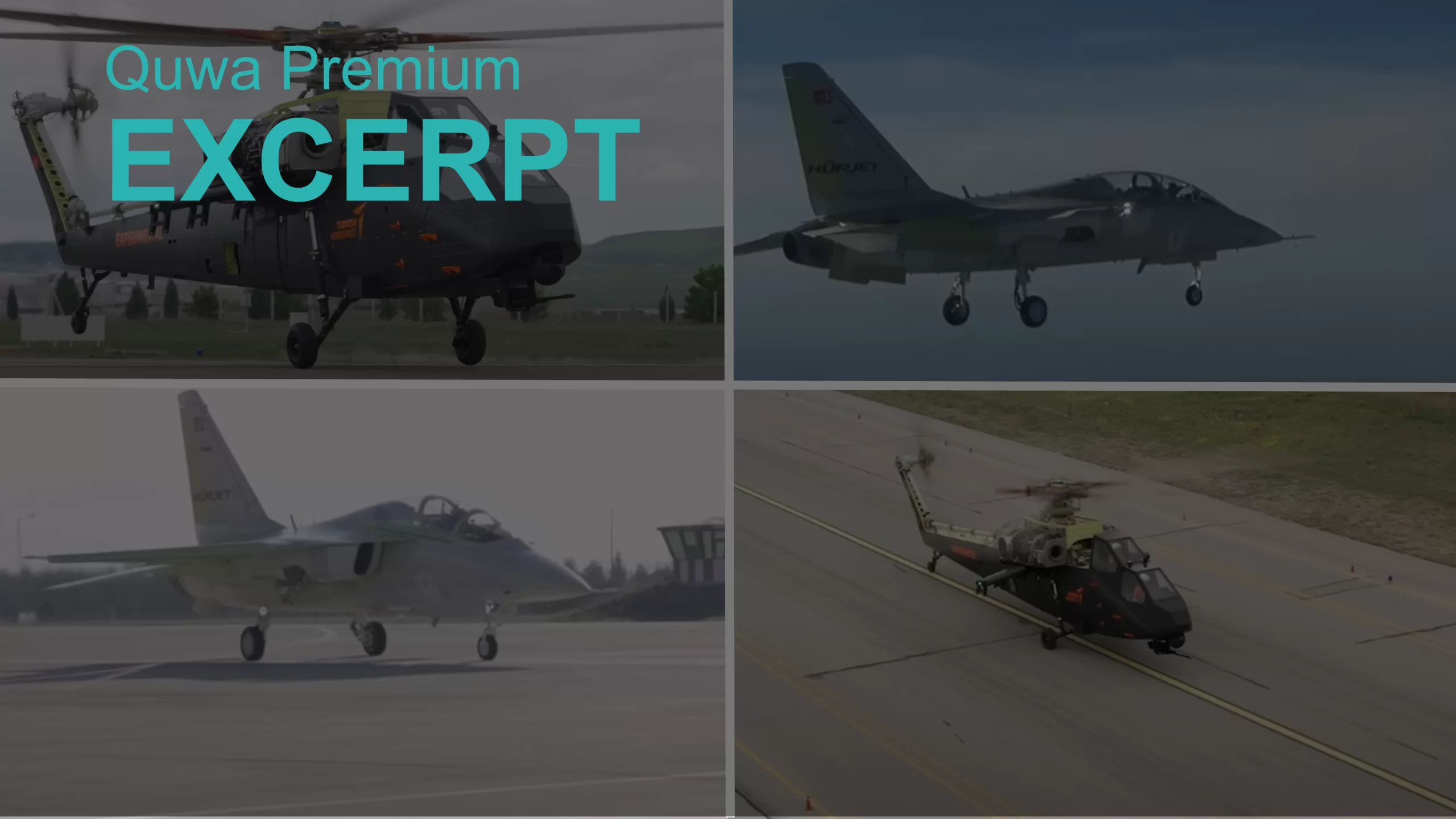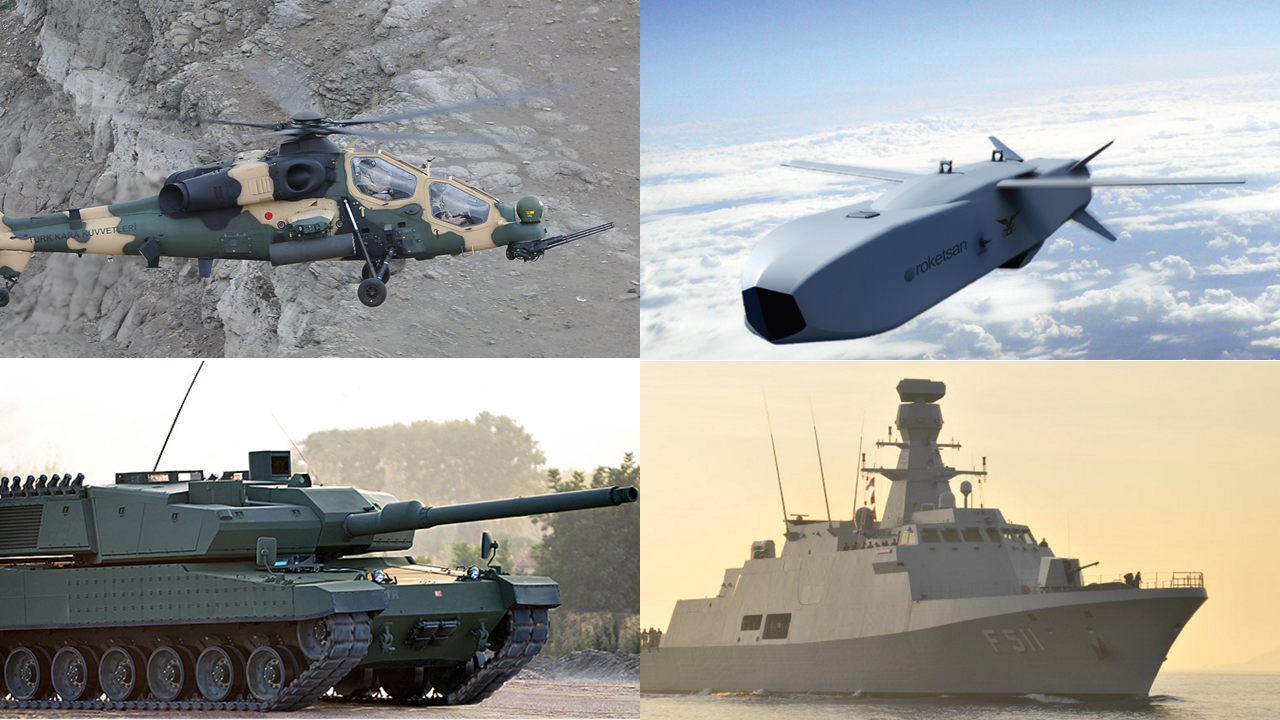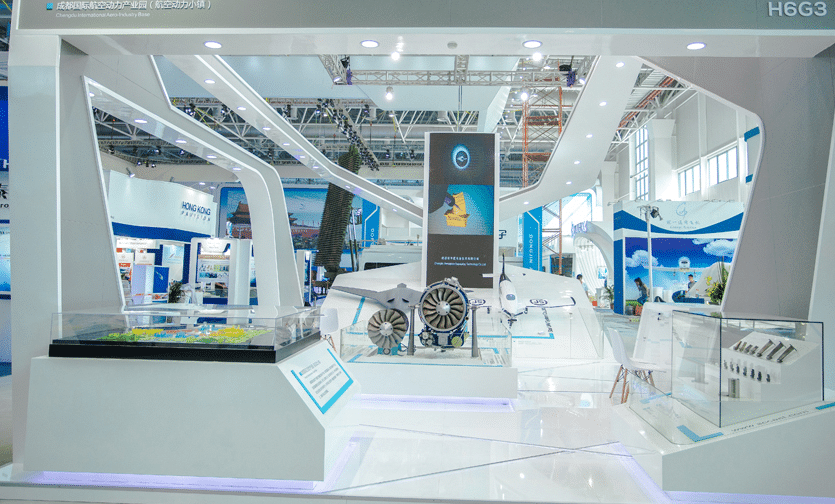3454Views

Türkiye’s Hürjet Trainer and T-929 Gunship Touch the Sky
This past week, Türkiye’s aerospace industry arguably crossed one of the greatest milestones of its history by carrying out the maiden test flights of its Hürjet trainer and T-929 attack helicopter.
The flights follow the unveiling and ground testing of the Turkish Aerospace Industries’ (TUSAŞ) MMU, i.e., Türkiye’s next-generation fighter aircraft (NGFA) and its flagship aerospace program. TUSAŞ also revealed its ANKA-3 unmanned combat aerial vehicle (UCAV) last month and, in turn, carried out ground tests for its swept-wing stealth drone around the same time as the Hürjet and T-929 flights.
Overall, the start of 2023 marks a significant forward step for Türkiye’s efforts to develop next-generation air combat solutions through its domestic industry base.
Hürjet Trainer and Light Combat Aircraft
TUSAŞ carried out the test flight of the Hürjet on April 23 in a facility outside of Ankara. The prototype unit was unpainted, and it was accompanied by an F-16. Its test flight reportedly lasted for 26 minutes, during which the Hürjet reportedly reached a top speed of 250 knots and an altitude of 14,000 ft.
Türkiye initiated the Hürjet program in 2017 as a future solution to replace the Turkish Air Force’s (TuAF) T-38 Talons. In 2020, TUSAŞ finalized the Hürjet’s design and started work on the aircraft.
The Hürjet is a single-engine aircraft similar in dimensions and specifications to the Saab/Boeing T-7A and Korea Aerospace Industries (KAI) T-50. Like those other aircraft, the Hürjet is also powered by a variant of the General Electric (GE) F404 turbofan engine.
Though there was one-year delay, reaching a maiden test flight was a major accomplishment considering that the Hürjet is Türkiye’s first manned jet aircraft program. It should not be understated how important this achievement; this was the flight of an originally designed manned jet fighter. Thus, Türkiye entered a select group of countries possessing the engineering and industrial capacity to carry out such a feat.
One might view the Hürjet to be a curious project in that the TuAF clearly had more mature and, arguably, more cost-effective alternatives available in the market. Indeed, Türkiye could have even negotiated for a competitive offset and technology-transfer deal from, for example, KAI or others.
However, Türkiye likely viewed developing Hürjet as a necessary steppingstone, especially for the flagship MMU program, which is much more complex, technologically speaking. With the Hürjet, TUSAŞ developed its internal competencies across key areas, such as flight control systems, materials, aerostructure design, production, and integration work. In turn, TUSAŞ carried this expertise forward to the MMU NGFA while, remarkably, working on the stealth fighter in parallel to the trainer…
End of excerpt. Subscribe to Quwa Premium to read the rest of this section.
T-929 Heavyweight Attack Helicopter
On April 27, TUSAŞ revealed the prototype of its T-929 heavyweight attack helicopter. It also tested the T-929’s TV3-117-series turboshaft engines, which were acquired from Ukraine’s Motor Sich. On April 28, the T-929 took to the skies for the first time through a take-off and hover test.
TUSAŞ announced that it was working on a 9-to-10-ton attack helicopter with a payload capacity of 1,200 kg. Like the T129 ATAK, TUSAŞ said that it was developing the new attack helicopter with hot-temperature and high-altitude operational environments in mind. According to TUSAŞ’ marketing material, the T-929 is to have a service ceiling of 20,000 ft, maximum cruise speed of 170 knots, and compatibility with a variety of air-to-air and air-to-surface munitions, included precision-guided munitions.
In June 2021, TUSAŞ signed an agreement with Ukraine’s Motor Sich for 14 TV3-117VMA-SBM1V engines, which also power the globally popular Mi-17 transport and utility helicopter. In contrast to the T129 ATAK, Türkiye opted to develop the T-929 as an ITAR-free solution from the onset. Indeed, it could have pursued the GE T700-series (which also powers the S-70/T-70 Black Hawk helicopter, which Türkiye intends to buy and induct in large numbers in the coming years). However, it went for the alternative engine platform…
End of excerpt. Subscribe to Quwa Premium to read the rest of this section.
End of Excerpt (626 / 1,135 words)
You can read the complete article by logging in (click here) or subscribing to Quwa Premium (click here).
For more Turkish defence news, check out:


